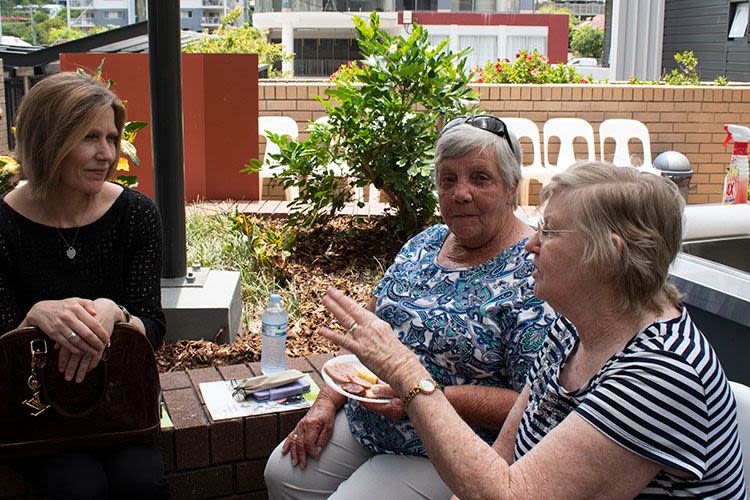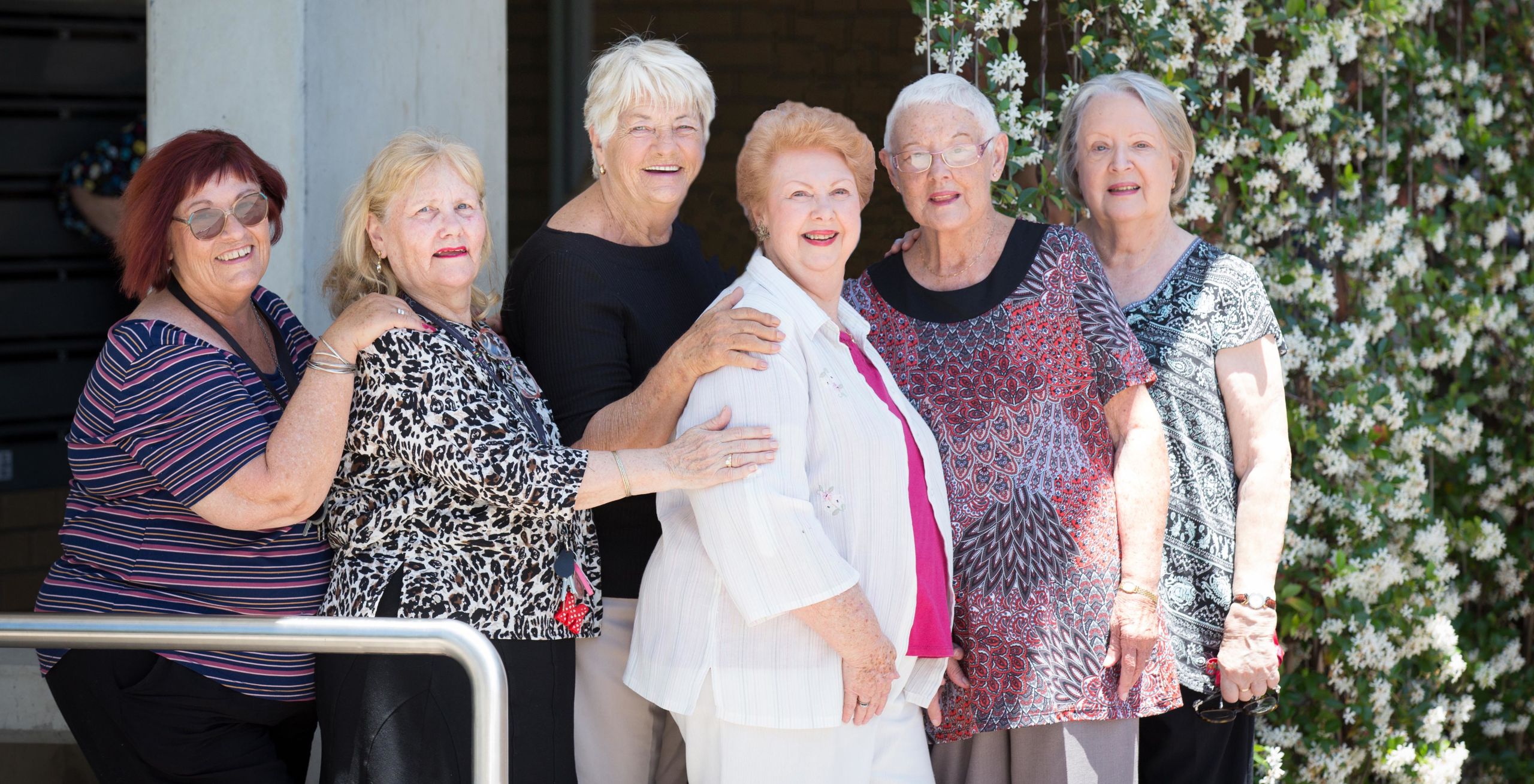Rethinking social housing for seniors
How UQ research is helping design social housing that better meets the needs of older residents.

As waiting lists for social housing properties across Queensland continue to grow, state housing authorities have focused policy attention on the under-occupancy of social housing – a problem that’s particularly prevalent as residents get older.
Under-occupancy or under-utilisation of housing occurs over time, usually due to normal life events and transitions.
As children grow up and leave home, or when spouses die, a large family home can end up being inhabited by a single (and elderly) occupant.
The standards for appropriate household sizes in Australia are measured using the Canadian National Occupancy Standard (CNOS), which is sensitive to both the household’s size and composition.
Using these measures, studies have found that nearly one in five social housing properties in Australia are under-utilised – a contentious problem that is viewed as contributing to the shortage of social and affordable housing across the country.
In 2018, the Australian Institute of Health and Welfare (AIHW) found 17% of Australian social housing was considered under-utilised.
A 2016 AIHW report yielded similar results for Queensland, with 17% of state-owned social housing properties identified as under-occupied (defined as a property with at least two bedrooms in excess of need, regardless of how those rooms are used).
The majority of these households comprised single or couple occupants aged 55 and over, whose life and living situations had vastly changed since moving into the family home.
In an effort to free up these large properties to families, the Queensland Department of Housing and Public Works (DHPW) introduced measures to encourage older tenants to move to smaller properties. These included offering incentive schemes, introducing reforms to rent structures and subsidies in social housing, and imposing financial penalties on older tenants who remained in larger homes. However, these strategies proved to be largely unsuccessful and left tenants feeling insecure about their future housing provision.
To address this, Professor Lynda Cheshire, Head of UQ’s School of Social Science, partnered with DHPW and Brisbane Housing Company Inc. (BHC) to explore the issues and develop social housing solutions that would better meet the needs of senior residents.
Professor Cheshire and her colleagues Dr Walter Forrest, Dr Iderlina (Derlie) Mateo-Babiano, and Associate Professor John Minnery, undertook a three-year longitudinal study starting in 2015 to explore the factors associated with senior tenants’ decisions when it came to downsizing or remaining in these large properties.
“Under-occupancy is a really contentious issue, particularly in social housing,” says Professor Cheshire.
“It implies that people are occupying homes bigger than they deserve, and that the solution is to move them into smaller homes or have them share their homes with others.
"But this completely overlooks the fact that people have made a home in those houses for 30, 40 or 50 years, and many don't want to move.
"For those who do wish to downsize, there are very few options within the social housing sector."
“What we actually discovered through the research is that the central issue is about providing suitable housing for people to age in one place.”
Professor Cheshire says that one of the main problems uncovered through the research was that older tenants living in family houses were unable to care for or maintain properties that weren’t designed with older people’s needs in mind.
“They were having to step over the bath to have a shower and falling,” she explains.
“They had gardens they couldn’t use or care for anymore, so they were paying for people to look after the garden, and they’re social housing tenants so they’re usually on very low incomes.”
At the time the study commenced, there was no social housing options specifically for older tenants, so people looking to move had limited options.
In response, BHC and the Queensland Government developed Caggara House – a 57-unit apartment complex located at Mt Gravatt East in Brisbane that was designed to assist with accommodating older public housing tenants who wished to move into a smaller, more manageable dwellings as an option.

The aim of Professor Cheshire’s study was to explore the factors associated with tenants’ decisions about whether to take up the offer to move or to remain where they were.
To examine what the impact would be of transitioning older tenants to smaller housing options, residents of Caggara House participated in semi-structured interviews and self-completed surveys.
This process was done in three intervals: before they relocated to Caggara House, and once each year for the first two years after relocation.
Professor Cheshire says interviewing tenants before they left their houses allowed the researchers to see what their households were like first-hand.
“They gave us a tour of the home and showed us how they used the space, including which rooms they used or didn’t use,” she says.
At the same time, DHPW sent a survey to a random selection of 770 social housing tenants who had been invited to move to Caggara House but had chosen to stay in their existing homes.
“We needed look at people who weren’t moving, as well as the people who moved, to find out why they were staying and what their reasons were for staying,” Professor Cheshire says.

Professor Lynda Cheshire (left) speaking with Caggara House residents.
Professor Lynda Cheshire (left) speaking with Caggara House residents.
Over three years, Professor Cheshire and her team analysed the survey and interview responses, as well as the administrative data provided by the Department of Housing, examining any changes in health and sense of wellbeing, and satisfaction with home and community.
The interviews identified two distinct categories of downsizers among the new Caggara House residents – the willing downsizers, who were the majority, and the reluctant downsizers.
Reluctant downsizers indicated a number of concerns they had with moving, such as the perception of a small unit, concerns regarding both parting with existing furniture and belongings and making it fit in a new space, and a sense of being forced to move by DHPW.
However, after the first year of downsizing, the majority of Caggara House tenants provided positive feedback on their decision to relocate to new home.
"There was a sense of being part of a greater community and more cooperation with other tenants," Professor Cheshire says.
"Two-thirds of residents found their new housing was much more suited to their needs and home maintenance was more manageable, with access to necessary services."

Some difficulties reported by residents after moving into Caggara House included having to dispose of belongings that wouldn’t fit within their new dwellings, and, especially for men, finding that they had too much time on their hands now that there were no home maintenance tasks to attend to.
Some tenants also said they found it difficult to adapt to life in the new complex, which is managed by a lessor, as well as the rental structure of community housing compared to public housing.
Caggara House residents share their experiences.
After the second year of living in Caggara House, however, the research showed tenants who downsized experienced differences in quality of life compared to those who didn’t, primarily because the maintenance of their home was more manageable.
Tenants also reported a greater connection to community and a belief that Caggara House was a long-term home.
A BHC spokesperson said the Caggara Research Project had provided the company with “a profound understanding of the lived experiences of Queensland seniors downsizing from public housing”.
“The data obtained through the project assisted BHC to develop more refined and tailored housing solutions for seniors, influencing apartment design, tenancy management and engagement approaches," BHC said.
“Providing a unique insight into the housing needs and preferences of existing public housing tenants in Queensland, the project has helped to establish an important contemporary baseline of knowledge of this group.”
From Professor Cheshire’s and her team’s research, BHC devised eight recommendations for future projects to help ensure a tenant-focused approach to delivering appropriate public housing for older tenants:
- Reframe social housing policy dialogue and practice to the opportunities of downsizing rather than the 'problem' of under-occupancy
- Emphasise tenant choice in moving and downsizing policy
- Provide more suitable properties that facilitate downsizing
- Reconfigure public housing transfer systems and processes to support downsizing
- Create housing options that foster community connectedness
- Retain diversity among housing providers
- Plan for housing solutions that respond to the diverse needs of emerging tenant cohorts
- Provide downsizers with support for relocation
Image credit: Westend61/Getty Images

Following the success of Caggara House, BHC has developed other senior housing complexes across Queensland, including Benson Place, which opened at Springwood in 2019, and the Arbor Sherwood retirement village, which is due to open in 2020.
BHC said the Caggara House research project and resulting recommendations had helped inform the design of these newer developments.
"Feedback about the process of relocating and the positive and critical feedback about the design of the apartments from both transitioners and non-transitioners were incorporated into the design and approach for BHC’s Springwood development [Benson Place].
“[The research] directly influenced how we engage with under-occupying older tenants and the types of homes that are being made available to them as they age.”
Professor Cheshire says she hopes the research will help reframe the debate about under-occupacy of social housing.
“From a policy perspective, there’s a lot of concern about under-occupancy,” Professor Cheshire says.
“Debates need to be reframed about suitable housing for older people that meets their needs, rather than problems of under-occupancy.”
Image credits: Header image – RapidEye/Getty Images; woman on couch – Benjamin Rondel/Getty Images
Words by Sasha Ackfun

Contact Details
Professor Lynda Cheshire
Head of School, School of Social Science

Email: l.cheshire@uq.edu.au
Phone: +61 7 3365 2383
View researcher profile


